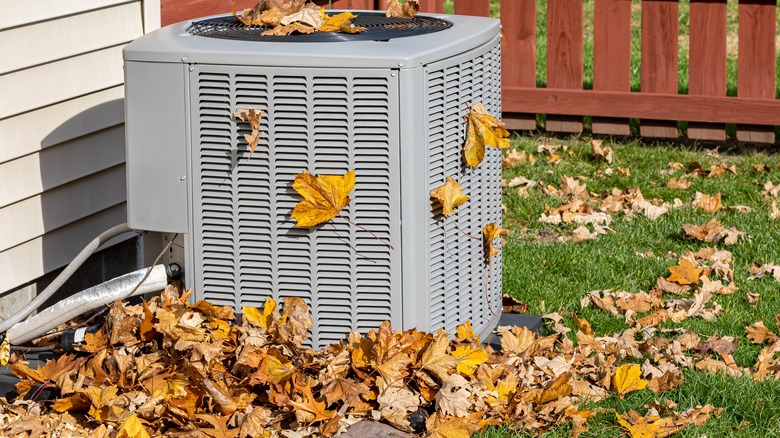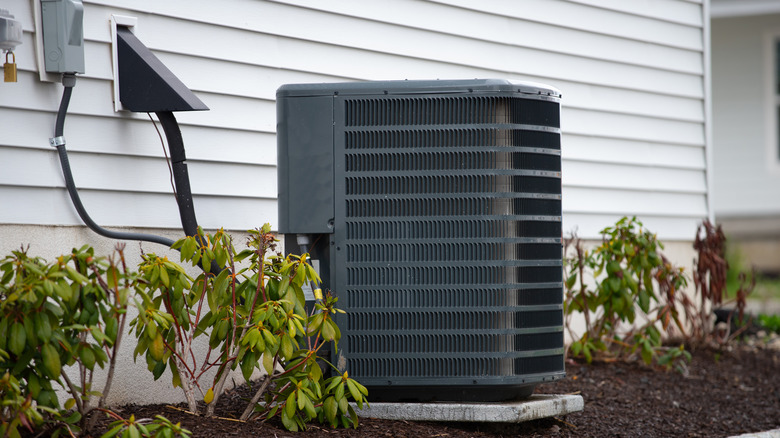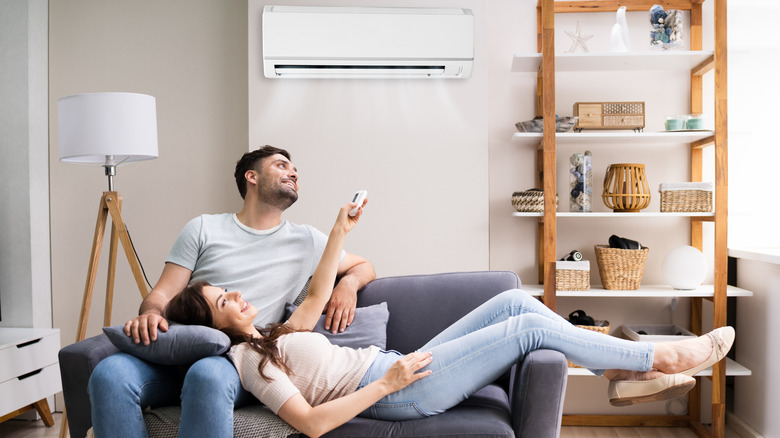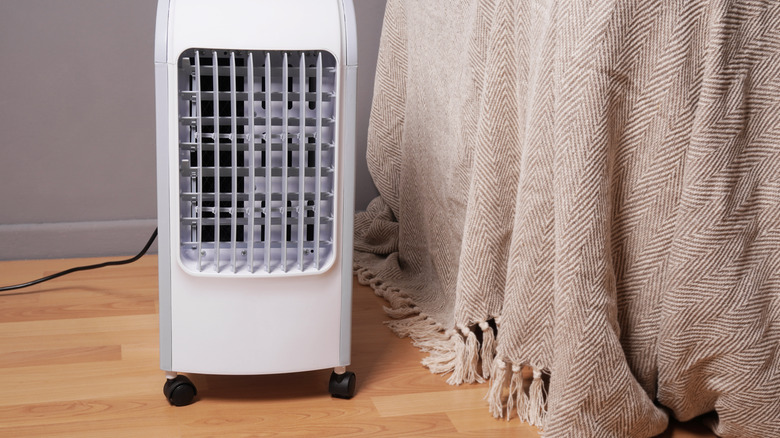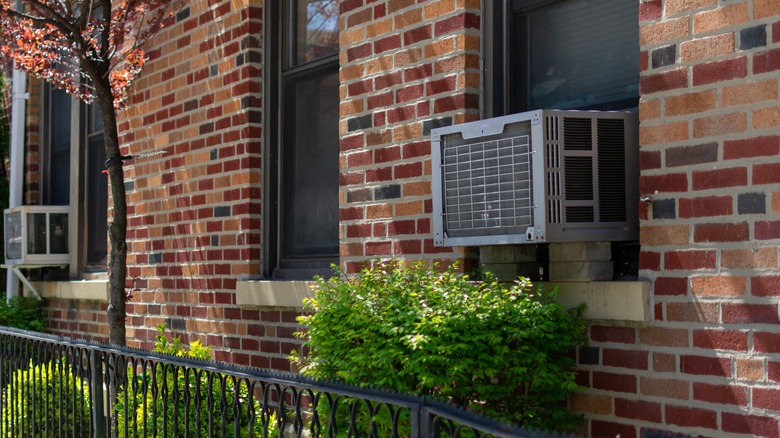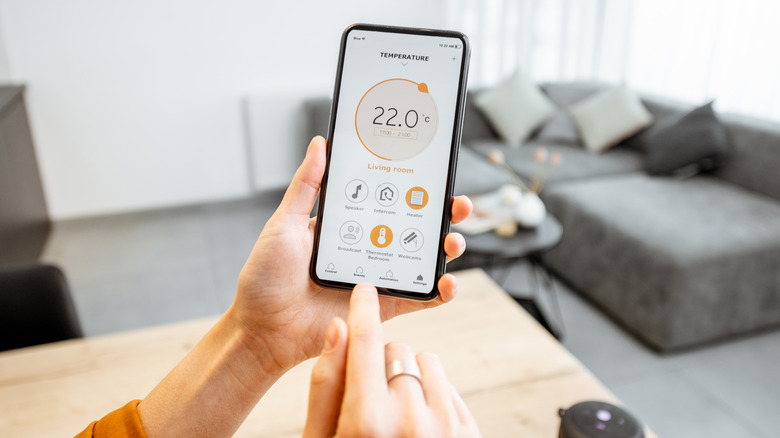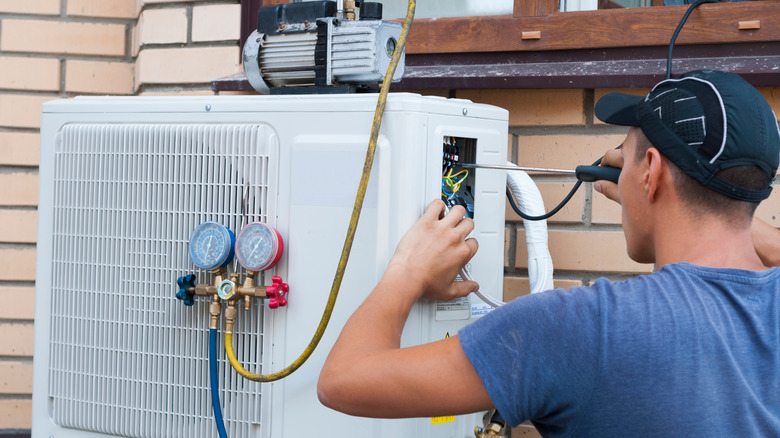What Are The Different Types Of Air Conditioning Units To Consider?
Keeping your home or workplace cool on a hot day is important for more than just staying comfortable. Air conditioning in a home or business can deliver several benefits related to quality of life and safety. It can reduce the risk of asthma attacks by lowering individuals' exposure to allergens, such as mold, mildew, pollen, and dust mites. Without air conditioning, individuals are more likely to leave their windows open. Open windows can pose their own set of problems, including more pests and parasites in the home, more noises from outside coming into the home, and decreased security for your home. A cool and comfortable home can also reduce the risk of dehydration. Individuals are less likely to be sweating, which can cause them to lose a lot of the water from their body. When you're more comfortable in your home (or office), you're also better able to be productive.
With all of these benefits, you may be ready to purchase or replace a unit for your home. However, if you've looked around for a new air conditioner, you may be feeling overwhelmed by the vast number of types to choose from. Continue reading to learn more about the different types of air conditioning units out there so that you'll be able to decide which is the best fit for your home, and avoid any mistakes along the way.
Central air conditioner
As their name implies, central air conditioners offer a centralized unit that sends cold air through a home's ductwork. The U.S. Department of Energy explains that these supply ducts connect with registers (either in the wall, floor, or ceiling) that release the cool air into the various rooms of the home. As the cool air moves around the home, it warms up and is then sent back to the cooling unit via the return ducts.
There are two types of central air conditioners: split-system units and packaged units. Split-system models consist of an exterior cabinet with a fan, compressor, and heat exchanger. Inside the home is a second cabinet housing an indoor heat exchange and the blower. Split-system central air conditioners are often paired with an existing furnace. They are usually the most budget-friendly option for those who already have a working furnace for heat, but are looking to add air conditioning to their home.
Rather than the two cabinets that split-systems have, packaged central air conditions have a single cabinet holding the heat exchangers, fan, blower, and compressor. This exterior unit is often found next to the house, but it may also be placed on the roof of larger buildings. The unit hooks up with the home's ducts to send cool air inside.
Hybrid/dual fuel system
According to Trane, a dual fuel heating system combines the functions of an electric heat pump with those of a gas furnace. These systems can be used year-round to meet the heating and cooling needs of a home, switching between both functions based on the temperature and user settings. The heat pump portion of the system cools homes in the summer by removing hot air from the home until the temperature set on the thermostat is reached. This portion of the system is also able to heat homes when the outside temperature is moderately colder, such as during the fall and spring months. Using the heat pump for these more minor heating needs is more energy-efficient and can help keep costs down. During the colder winter months, the dual fuel furnace works to turn fuel into heat to warm the home.
A dual fuel system can be used in a variety of climate types where both heating and cooling are necessary. These systems also offer longer lifespans than some other types of heating or cooling equipment because each system isn't used year-round. They may last for up to 20 to 25 years.
Wall- or floor-mounted ductless mini-split air conditioner
Carrier shares important information about ductless mini-split air conditioners, which feature two units: an indoor unit and an outdoor unit. The two units are connected by wiring and refrigerant tubing, and work to deliver warm or cool air to a home. One of the benefits of a ductless mini-split air conditioner is that they work without ductwork, making them an easy add-on for older homes.
These units operate similarly to a central air conditioner. The key difference, however, is that rather than distributing the cold air to multiple rooms through the ductwork, they send the cold air directly into just one room in the home. Sometimes, the indoor unit for a ductless mini-split air conditioner is mounted to the wall. However, there are also floor-mounted ductless mini-split air conditioners. Rather than being installed higher on the wall, these units are installed at the base of the wall, closer to the floor. Floor-mounted ductless systems can be easier to access when it is time to change the filters or perform other maintenance-related tasks. Their lower placement on the wall also means that the cold air they release may be felt more quickly by the individuals in the room.
A cassette air conditioner is another type of split unit. According to ACSIS Airconditioning Warehouse, the indoor unit is placed in the ceiling. There are several different capacity options available with cassette units to meet the demands of different spaces. However, due to the amount of ceiling space needed to fit a cassette air conditioner, they are best for larger spaces that will offer sufficient room. While wall- and floor-mounted ductless mini-split air conditioners can often be installed by home owners, it is best to hire a professional to install a cassette air conditioner. This will help ensure you're able to avoid the beams in your ceiling or causing any damage to your property.
Portable air conditioner
Portable air conditioners are exactly what they sound like: air conditioners that are designed to be easy to move between rooms in a home, or even to different locations. Gallagher's Plumbing, Heating and Air Conditioning explains that portable air conditioners cool a room by removing hot air from the space and sending it outside. The air circulating through the room is also cooled by the unit's motor. Portable air conditioners feature a hose that helps pull humidity from the space, further increasing the comfort level. This type of unit is vented through a window. For this reason, window kits come with most units, allowing you to set everything up so that the exhaust hose vents to the outside.
If you choose a portable air conditioner, be sure to keep the condenser coils clean. If too much dirt or dust accumulates on the coils, it will require the condenser to work even harder to keep the air in the room cool. And, if it works too hard, it may overheat, which could cause it to stop working.
Window air conditioner unit
Aireserv Heating & Air Conditioning explains that window air conditioners are the most basic air conditioning unit. Unlike other system types that feature multiple components, a window air conditioner is just one single unit. All the different parts for the system are housed within the unit, which is mounted in a window. It also only requires an electrical outlet to work. The more basic design and ease of just plugging it in means that this type of unit is easily portable. If you want to enjoy air conditioning in a different room in your home, simply move the unit to a window in that room (though, they can be pretty heavy).
Window air conditioners pull hot and humid air out of a room and cool the air that is circulating in the room. These units have a thermostat, which turns on the blower to cool the air when the room gets too hot. The warmer air from within the room circulates through the unit and over the refrigerant coils. Passing over these coils cools their air and then releases it back into the room. Soon, the overall temperature of the room will be cooler and more comfortable.
Smart air conditioner
With a smart air conditioner or thermostat, users can operate the unit using a smartphone or other device, and for that reason they get a lot of hype. Cielo explains that downloading an app to a smartphone or tablet makes it possible to adjust the home's temperature, create heating and cooling schedules, and more. You can also pair a smart air conditioner with a smart assistant, such as Amazon Alexa or Google Home.
In addition to the ease of operation, there are several other benefits associated with smart air conditioners. They can help conserve energy by making it easy for individuals to adjust the heating or cooling schedule to their comings and goings. For example, if you know you are going to be out of the house and at work every day between 9 a.m. and 5 p.m., you can set the thermostat to have it kick on shortly before you get home, rather than leaving it running all day. It also allows you to make last minute changes to adapt to your schedule. In addition to saving you money on your energy bills, this reduces your impact on the environment by limiting emissions. Smart air conditioners can also be easier to maintain. Users can use the app on their smartphone to diagnose errors and identify routine maintenance needs.
Geothermal air conditioner
Those looking for an energy-efficient air conditioner may want to consider a geothermal unit. According to Dandelion Energy, these units cool a home in the summer — and heat it in the winter — through underground pipes. A special fluid that can collect thermal energy moves through these pipes, sending cooler or warmer air into the home, depending on the time of year.
It may seem a bit illogical that a series of underground pipes could both heat and cool a home at different times of the year. After all, wouldn't the fluid beneath the surface be too cold to warm a home during the frigid winter months? Well, the pipes are placed far enough below the surface (below the frostline, to be exact) where the temperature is 55 degrees, regardless of the season. In the hot summer months, this cooler temperature helps decrease interior temperatures. In the winter months, it does the opposite and warms the home.
Geothermal systems cost more to install up front. However, they are extremely efficient and can help you save money in the long run. In fact, according to the U.S. Department of Energy, a geothermal system requires between 25 to 50% less energy than most other cooling systems.
Spot cooler
According to Preferred Climate Solutions, spot coolers suck in hot air, cool the air and reduce humidity by sending it across a coil with refrigerant, and then pump the cool air back into the room. These models often have adjustable vents, allowing individuals to direct the cold air where it is most needed. The excess heat that results from the cooling process is sent through a tube that often vents out a window or connects to the ceiling. Spot coolers have a collection tank that holds the condensation that is produced as the air is cooled and the humidity level is decreased. This tank will need to be emptied periodically, and the cooler will turn itself off when the tank is full.
As one may guess based on their name, spot coolers are intended for cooling a small area, such as a server room. There are different sizes of spot coolers to choose from, typically ranging between 1 and 5 tons. The tonnage refers to the heat load that the cooler is designed to handle. To choose the best size spot cooler for your needs, consult with a cooling professional. Before your discussion, gather information to share about the dimensions of the space you want to cool, where you will be using the cooler, whether you will be cooling people or electronics, and, if applicable, the number of people that typically work or live in the area to be cooled.
How to choose the best central air conditioning unit for your home
When choosing a central air conditioner for your home, there are several factors to consider. Failing to take some time and really assess which unit will best meet your needs could result in your dissatisfaction. BillyGO notes that the first step is to determine whether you prefer a split-system or a packaged system. As described earlier, a split-system can be a good choice if you already have a furnace, but are looking to add an air conditioner. A packaged system, which can take the place of an air conditioner and a furnace, may be the right choice if you do not already have a working furnace.
Once you've decided on the type of unit you want, the next step is to determine the ideal size to purchase. This is a good discussion to have with your heating and cooling professional, who will be able to conduct a loan calculation to identify which size unit will best meet your demands. Some other factors to consider when shopping for a central air conditioning unit include energy efficiency, SEER ratings, environmental impacts, manufacturer warranties, noise when operating, and whether any tax credits are being offered by the government.
How to choose the room air conditioning unit for your home
When buying a room air conditioner, such as a window unit, a portable air conditioner, or a ductless split air conditioner, you'll also want to take some time to evaluate and compare the different options available to you. Consumer Reports says to pay close attention to energy usage. Models that have earned Energy Star certification should be more efficient and decrease the chances of a leak. They also share that you should look for models that are quiet when operating. If you'll be using the air conditioner in your bedroom, loud sounds could interrupt your sleep.
Other features and considerations to look for include the location of the filter and how easy it will be to clean, whether the unit offers smart control options using a smartphone or tablet, and the length of the manufacturer's warranty that comes with each unit. When shopping, keep in mind that portable air conditioners are more expensive and consume more energy than most window units. Ductless split air conditioning systems are quieter, but will cost more than portable or window units.

